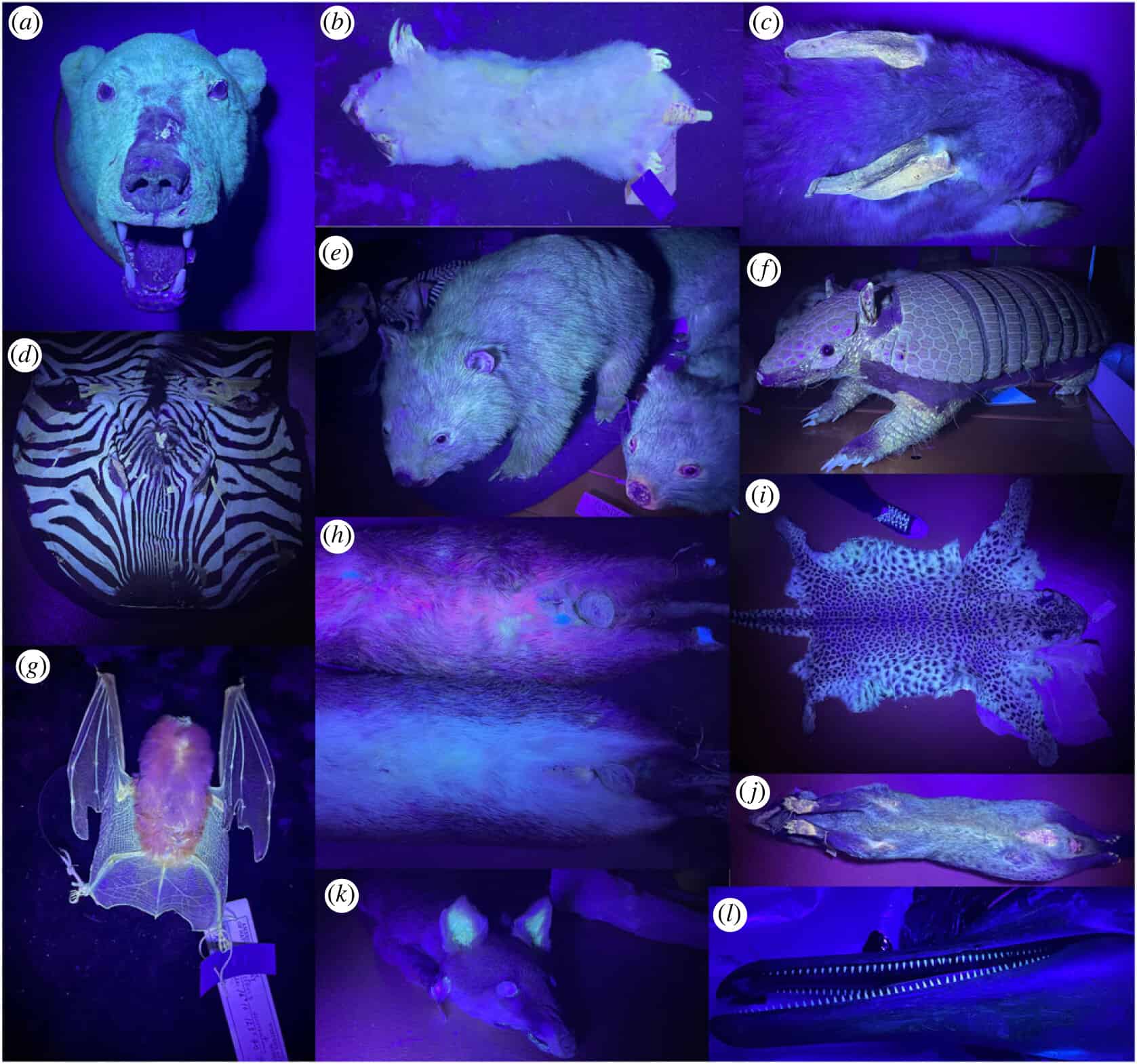Over the past few years, there’s been a growing number of reports about mammals fluorescing under UV. Wombats do it, platypuses, and even squirrels do it. However, we didn’t know exactly how common this was – until now. Researchers studied 125 species, accounting for half of all mammal families, and all of them glowed under UV light in different ways.

Fluorescence occurs when the energy for ultraviolet light – a form of electromagnetic radiation invisible to humans – is absorbed by certain chemicals. These then emit visible light, which is lower-energy electromagnetic radiation. This happens with white clothes glowing under UV light, for example. But it’s also surprisingly common in the animal world.
Glow my darlings, glow
Animals can glow under UV light due to proteins or pigments in their fur, scales, or skin. It’s been reported for birds, amphibians, fish, corals, and reptiles but less frequently in mammals. Bones and teeth glow with fluorescence, as do nails and white human hair. Rodents have a pink glow under UV light, while platypuses glow blue and green.
Researchers from Curtin University and the Western Australian Museum used preserved and frozen specimens from the museum to identify which ones fluoresced. They ruled out that glowing wasn’t an artifact of the preservation process and found all the 125 mammals had fluorescent claws or teeth, while 86% had fluorescent fur.
“We report fluorescence for 125 mammal species, from half of all mammalian families,” the researchers wrote. “While the amount and location of fluorescence varied between species, all exhibited some form of apparent fluorescence. Areas of fluorescence included white and light fur, quills, whiskers, claws, teeth and naked skin.”
In their study, the researchers first started with the platypus (Ornithorhynchus anatinus) to see if they could replicate the previously reported fluorescence. They photographed specimens under UV light and noticed a glow. They then confirmed this with fluorescence spectroscopy, a technique that records “fingerprints” of the glow.
They then repeated this process for other mammals and found evidence of fluorescence in the fur, spines, skin, and nails of koalas, bandicoots, Tasmanian devils, and even cats. In particular, they noticed that white and light-colored fur is fluorescent, while dark pigmentation prevented it. For example, the zebra’s dark stripes don’t glow.
The researchers also used their dataset to see if fluorescence was more common in nocturnal species. For this, they correlated the total area of fluorescence with traits such as nocturnality, diet and locomotion. They found nocturnal animals were indeed more fluorescent, while aquatic species were less than those living on land or in trees.
“We have demonstrated widespread fluorescence among mammals, by confirming the phenomenon using spectral analysis and subsequently examining observable fluorescence throughout the phylogeny of mammals,” the researchers wrote.
The groundbreaking study from Curtin University and the Western Australian Museum sheds a luminescent light on the enigma of fluorescence in mammals. Far from being a rare phenomenon, it appears to be a shared characteristic across many species, illuminating biological diversity in an entirely new way. The discovery also raises fascinating questions about the evolutionary advantage that this glowing trait may offer.
For instance, could fluorescence play a role in communication or mating among nocturnal animals? And what are the ecological impacts, if any, of fluorescence? Do animals that glow have an easier time navigating or finding food in the dark? Are they more or less susceptible to predators? As of now, these questions remain to be answered, yet they provide an exhilarating avenue for future research.
The study was published in the journal Royal Society Open Science.



